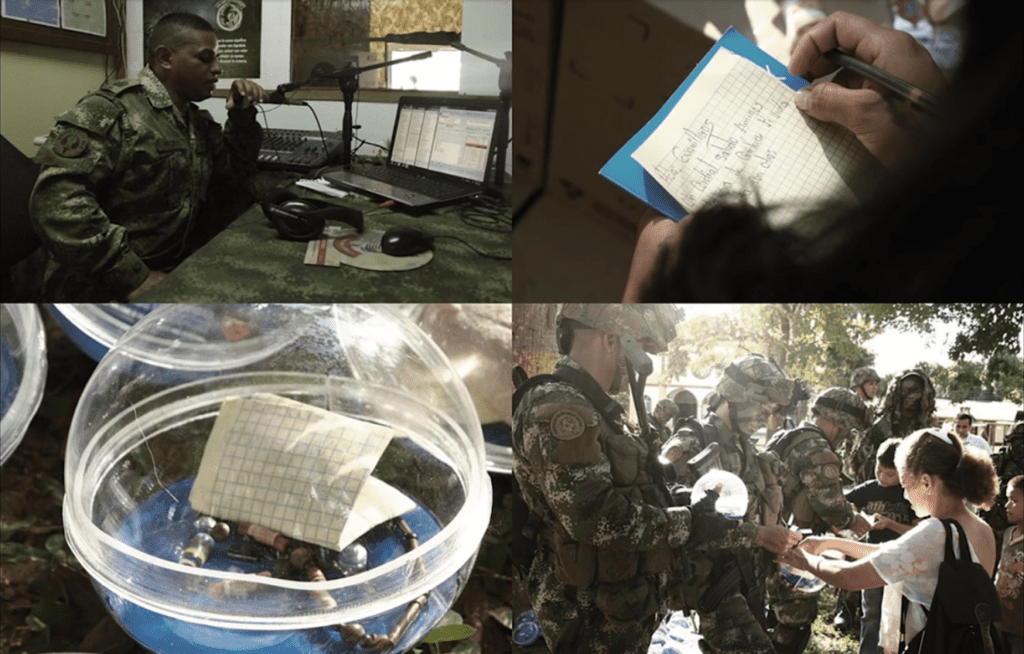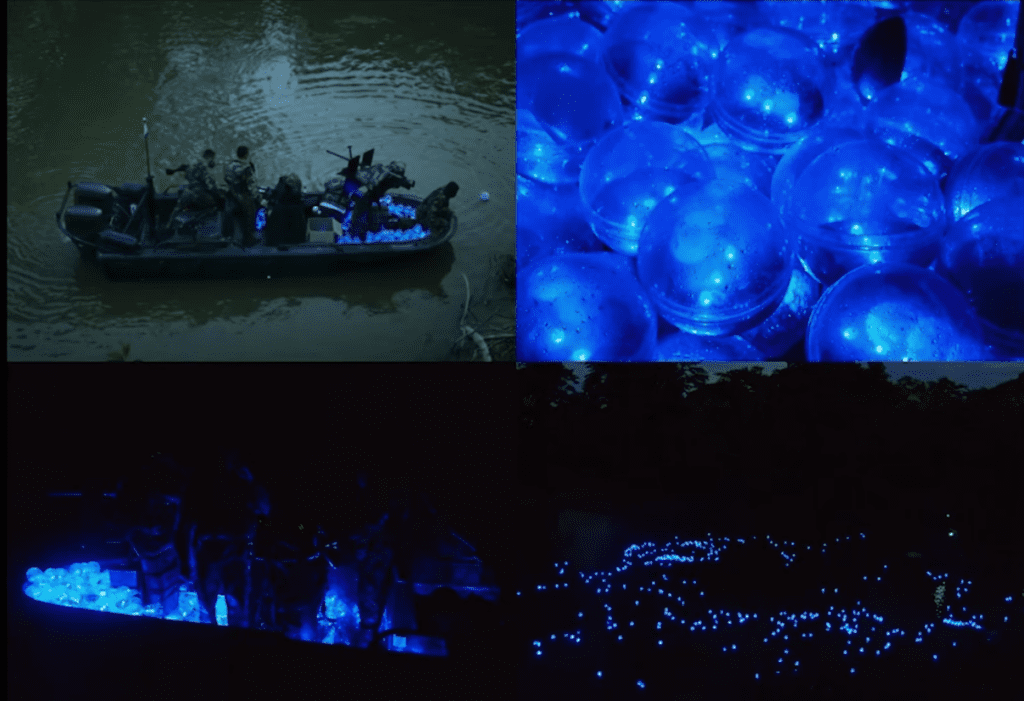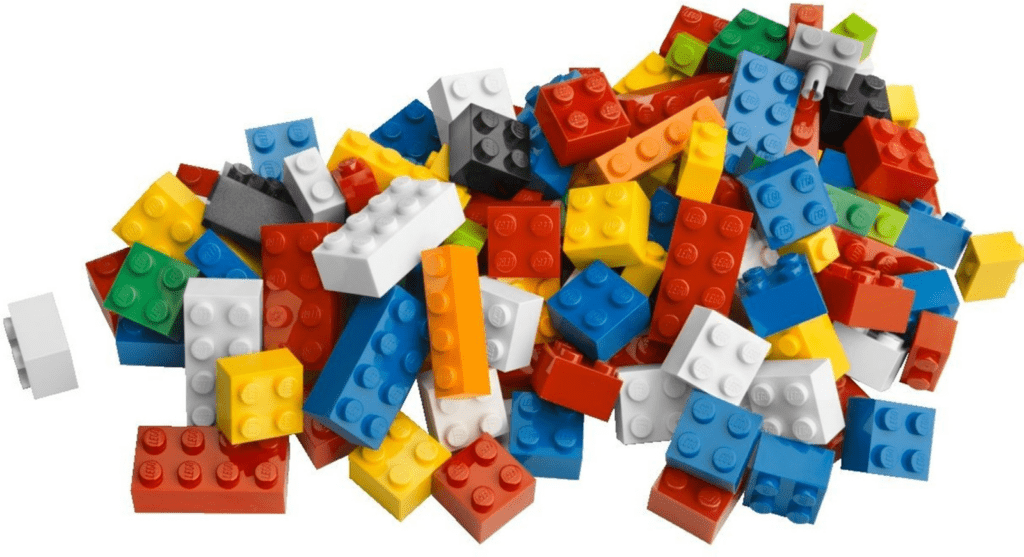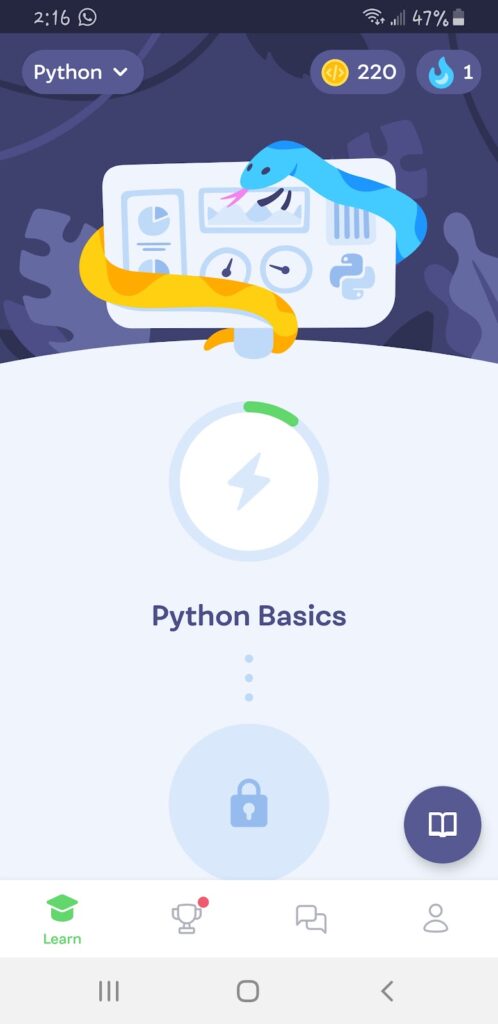Introduction
The term technology, finding the boundaries of technology, and the extent to which it can be leveraged for education has been often in my mind in this program, in this Masters of Educational Technology. I feel that many stones have been left unturned.
The goal of this IP is to analyze learning artifacts that operate in somewhat distinct domains. While drawing a cut between physical spaces, physical tools, digital tools, and social structures may be inherently problematic – especially since these domains often operate simultaneously, for example in schools, and this cut does not fully appreciate the influence that each domain has on another – treating these modalities as separate allows me to assume the role of various designers who incorporate pedagogy into design in potentially diverse ways.
This analysis intends to explore the diversity of how pedagogy is designed into a medium.
What is evident across these examples is that pedagogy is distinctly embedded into each of them. On powerful component of these examples has emerged, which is development of a ‘good-enough holding environment’.
“the good-enough holding environment does not collapse the space of intermingling between self and other. It does not allow either self or other, inside or outside, to do all the talking, but even when it does manage to be good enough to hold the potential for transitional space the good-enough holding environment cannot guarantee the arrival of transitional experience. It can, however, hold the potential for springing the surprise of a transitional experience, and transitional experience always comes as a surprise for both the teachers and the designers who invite it or design for it and for the students and audiences who take up such invitations or use such designs.”
Ellsworth, 2014, pp. 60-61
Physical Environment – Messages in a Bottle?
Choosing to focus on a ‘physical environment’ was a big task. At first, I thought of schools, museums, playgrounds, or festivals: places that people are a part of. I also considered environments designed for and active in education. I considered forests, clearcuts, the ocean, and rivers: locations in nature that communicate something through their very being. My intention was to explore a more ‘opinionated’ design of an environment; one designed with a specific purpose that still creates an opportunity for a person to maintain their autonomy.
Recent news stories, propaganda, and misinformation led me to a fascinating marketing campaign to encourage guerilla fighters to demobilize, funded by the government of Columbia and conducted by Fransisco Samper and Jose Miguel Sokoloff (Samper, 2017).
Samper and Sokoloff, conducted over 400 campaigns in ten years, which resulted in the demobilization of an estimated 18,000 guerilla fighters (Samper, 2017). These campaigns ranged from decorating a jungle tree as a Christmas tree to delivering messages from demobilized fighters (Samper, 2017). I will be focusing on one campaign where the rivers were filled with light-up acrylic balls carrying messages and other objects (Samper, 2017).

(Samper, 2017, 10 min. 18 s.)

(Samper, 2017, 10 min. 31 s.)

(Samper, 2017, 10 min. 43 s.)
Sokoloff (2014) explains:
“rivers are the highways of the jungle, and this is something we learned, and most of the recruiting was being done in and around the river villages. So we went to these river villages, and we asked the people, and probably some of them were direct acquaintances of the guerrillas. We asked them, ‘Can you send guerrillas a message?’ We collected over 6,000 messages. Some of them were notes saying, get out. Some of them were toys. Some of them were candy. Even people took off their jewelry, their little crosses and religious things, and put them in these floating balls that we sent down the rivers so that they could be picked up at night. And we sent thousands of these down the rivers, and then picked them up later if they weren’t. But lots of them were picked up. This generated, on average, a demobilization every six hours.”
Analysis
One question that may arise immediately is if this is the design of an environment or a tool that has a great impact on an environment, or even where the difference is between tool and environment. This is besides the point but does bring awareness to the impracticality of the cut I have drawn.
These acrylic balls in the daytime may elicit curiosity but in the night are captivating and transform the visual environment. I try to imagine myself isolated from the luxuries of society, roughing it in the jungle for years, and this moment may be just shy of magic. The medium alone may incite a wonder for the possibilities of life not at war.
On a micro-level, the medium is ‘persuasive’ as it employs the hooked model (Eyal & Hoover, 2014). There is an external trigger – the novelty of floating acrylic balls. They demand a simple action – the collecting and opening of the balls. They each contain a variable reward – different messages, gifts, etc. Then the cycle continues with a trigger of curiosity with the knowing of a variable reward.
Digging deeper, maybe this moment elicits a ‘different’ person, or recruits what Maslow (1958) describes as a primary neural process, one that plays and fantasizes, instead of the secondary process that is “logical, sensible, and realistic.” Maybe in this moment, the self-identification of the guerrilla fighter recedes and who they were before becomes more present. The art exhibit ‘Love’ by Aleksandr Miilov (2015) acts as a visual metaphor.

Love by Aleksandr Miilov (2015)
http://milova.net/love
At this moment, some people may interact with the acrylic balls, open them up, and read the messages. Messages that have been created by people of nearby villages or even acquaintances of the guerilla fighters, people who the guerrilla fighters may have been before fighting and who may be feeling like from the novelty of the experience. In this moment, the message may have a greater impact by connecting to the mind of that primary process. This may be the third zone as described by Ellsworth (2004) where the acrylic balls and the person meet in a way that is transitional, that “opens up a space of difference between self and other, inner and outer realities.” The messages delivered from this medium are distinctly from the other or outer realities but may deeply resonate with the self thus obscuring the boundary as a third zone.
Physical tools – LEGO
LEGO is a very popular interlocking brick construction toy and “is one of the world’s leading manufacturers of play materials” (LEGO, n..d.). While LEGO blocks come in many shapes and sizes, the traditional blocks have a method of interconnecting with one another allowing for rapid and diverse construction.

LEGO Bricks And More – Mattonito Retrieved from https://www.mattonito.com/uk/prices/lego-5932-my-first-lego-set
Analysis
LEGO is a tool for play that facilitates spacial awareness and construction. Embedded in its design is a constructionist approach – where the player learns through the experience of constructing (Kafai, 2006). Creations of LEGO are temporary due to LEGO’s malleability and it invites players to disassemble, remix, and recreate. This parallels a constructivist pedagogy of knowledge that is developed and redeveloped based on prior experiences (Powell & Kalina, 2009). Additionally, this temporariness, lowers the stakes, making ‘failure’ less of a barrier to the player (Fullerton, 2014).
LEGO does have restrictions in how it can be used as a building element – the interlocking components only interlock in specific ways. This elicits a method of thinking in the player for the construction of LEGO – with practice, the constraints LEGO presents may be intertwined with the player’s thinking.
LEGO’s influence is stationary, it can only ‘want’ to be constructed, and demands action to be taken by the player. What if a player doesn’t know what construct? Does LEGO become anxiety-provoking? Or make a player aware of a lack of creativity? Is this ‘stationary’ influence inseparable from such a free and open tool, such as LEGO?
Often paired with LEGO are instruction manuals offering a step-by-step guide to construct a pre-defined artifact. The instruction manual may mediate and motivate players use of LEGO, but they are a new actor that influences the media ecology.
Digital tool – Mimo: Learn coding in HTML, JavaScript, Python
“Learning to code has never been so easy!
Advance your career, build apps and websites, or become a developer. With Mimo, you can learn programming (in Python, JavaScript, HTML, etc.) – the skill of the century, a few minutes at a time.
Used by millions of learners, Mimo is just about the most accessible and effective way to learn to code in Python, JavaScript, HTML, SQL, CSS. Our programming lessons and practice coding exercises are suitable for everyone, even with no prior coding knowledge and experience.
🏆 Google Play’s Editor’s Choice
🏆 Best Self-Improvement Apps of 2018
Even if you know nothing about coding but want to level up your skills and become open to all the opportunities available to those who are fluent in computer programming languages, Mimo is a great way to get introduced to the world of coding. Install Mimo and get access to free coding lessons in Python, Javascript, HTML, and more that will fit into your day.
Mimo makes learning to code and diving into computer science as intuitive and easy as possible. Our curriculum is built by professionals and helps you learn by practicing on real-world projects in HTML, JavaScript, CSS, Python, and SQL.
“• Mimo’s interactive curriculum and bite-sized coding lessons make it possible to learn to code at your own pace: coding tutorials and challenges are there for you to discover more, whenever you have a few minutes.”
“We will be happy to guide you along your personalized coding journey if you join millions of coders who are already learning programming and data science with Mimo’s courses.”
Mimo, n.d.
Analysis
Mimo is a great micro-learning-style app that gets a user coding with carefully planned lessons that utilize scaffolding and rewards. It boasts personalization, though I found it to be quite limited. There was an introductory quiz that chose my learning path, but after placement, the learning path is rigid and prescriptive.

In-app learning path, Mimo (n.d.)
Mimo exhibits behaviourist pedagogies. Users learn to code through the very experience of coding in a supported environment. Instant feedback is presented and in the case of errors, hints and further help is given. The bite-sized chunks of information and scaffolding are fantastic.
Motivation is predominantly addressed by behaviourist approaches with are evident throughout the whole experience. Rewards are given for correct answers, streaks are awarded for continued practice, and leaderboards are highlighted. Additionally, the app prompts a user to commit 5-15 minutes per day, potentially with the intent of developing a habit. This type of motivation may be considered as external regulation which is ranks very low on the motivational spectrum (Werbach, 2015).
Autonomy can improve motivation (Figueroa-Flores, 2016) and Mimo lacked it. I found it frustrating that I could not choose which lesson to engage with. The lessons presented in my ‘personal’ learning path were below my skill level and boring – the supports were unnecessary as I was below the Zone of Proximal Development. With autonomy to choose my lesson, I would have had greater motivation to continue.
Mimo is a for-profit app that utilizes a subscription-based model. Instilling habitual use with users is beneficial for both the users’ learning and the app’s income. For the most part, a subscription unlocks content. One feature offered with a subscription is the ability to ‘repair’ streaks. This may impede learning by lessening motivation introducing a pay-to-win model.

In-app membership purchase, Mimo (n.d.)
Ellsworth (2004) explains two systems at play in a space: pedagogy, which is unable to contain or control and the learner which is perpetually changing. Mimo’s design is rigid and hardly adapts nor allows space for the learner to follow their own learning directions. Mimo attempts to contain or control the learner and in doing so draws a clear boundary between self and others unrealizing the potential for entanglement (Ellsworth, 2004).
The rigidity of the medium of Mimo parallels that of coding languages. Mimo restricts choice, has sequential order, and utilizes rapid feedback loops while coding requires perfect syntax, sequential operation, and rapid iteration in debugging. (I wonder if Mimo was created primarily by programmers rather than educators?) There is the possibility that people drawn to coding and thinking in code will thrive in the environment of Mimo since embedded in the medium is its message.
Social structure – Makerspace
A makerspace is a physical location that primarily provides access to tools. This environment facilitates a unique social structure which I will explore.
Makerspaces are a broad term that includes the garage where a group regularly meets to make, publicly operated areas, in a library for example, and for-profit institutes (Armstrong et al., 2018). Hennelly et al. (2019) define “makerspaces as a place in which people with shared interests, especially in crafts, technology, design and product development can gather to work on projects while sharing ideas, equipment and knowledge.”
In attempting to analyze the influence on learning in the social structure of a makerspace, one must consider the broader ecology. Naturally, each makerspace will have a unique set of “issues, interests, actors and agendas” (Selwyn, 2012) and it is impossible to consider everything.
Analysis
The majority of makerspaces have a value of community and making in a public forum which points to a shared pedagogy of social constructivism. Social constructivism views people as constructing their own meaning and highlights the importance of relationships and diversity (Powell & Kalina, 2009). The open relatively flat hierarchy of social power allows for connection and self-organized learning to thrive.
While each person brings themselves to the makerspace, the entity of the makerspace also instills values in the person (Latour, 1992). A makerspace needs collaboration, sharing, and ideas communicated otherwise it would cease being a makerspace and become something else, maybe a factory or library. The social component is a fundamental part of the makerspace ecology.
The makerspace ecology has a wealth of information and a maker may be able to draw comfort in this and think creativeily, with few limitations – to think as if the makerspace is an extension of their senses (Strate & Lum, 2000).
Where some makerspaces leave room for desire is in diversity. In 2019, MakerLabs membership was less than 25% women (private correspondence) which led to the development of the Tools for Women program – https://www.makerlabs.com/toolsforwomen. Such an intervention adresses contingency cues by proving a value for diversity in gender (Steele, 2011). Unfortunately, prejudices may still be prevalent in individuals. Lack of diversity may induce stereotype threat, which as described by Steele (2011)
“diverts attention and mental capacity away from the task at hand, which worsens performance and general functioning, all of which further exacerbates anxiety, which further intensifies the vigilance for threat and the diversion of attention. A full-scale vicious cycle ensues, with great cost to performance and general functioning.”
References
Armstrong, C., de Beer, J., Kraemer-Mbula, E., & Ellis, M. (2018). Institutionalisation and Informal Innovation in South African Maker Communities. Journal of Peer Production 1 (12): 14–42. http://peerproduction.net/editsuite/issues/issue-12-makerspaces-and-institutions/peer-reviewed-papers/institutionalisation-and-informal-innovation-in-south-african-maker-communities
Ellsworth, L. (2004). Chapter 3 – Pedagogy’s Time and Space. In Places of learning: Media, Architecture, Pedagogy (pp. 57-82). Routledge.
Eyal, N. & Hoover, R. (2014). Chapter 6 – What Are You Going to Do with This?. In Hooked: How to Build Habit-Forming Products (p. 196-213). Penguin Group.
Figueroa-Flores, J. F. (2016). Gamification and Game-Based Learning: Two Strategies for the 21stCentury Learner. World Journal of Educational Research, 3(2), 507-522.
Fu, P. (2021). From bottom-up to top-down: governance, institutionalisation, and innovation in Chinese makerspaces, Technology Analysis & Strategic Management, 33:10, 1226-1241, DOI: 10.1080/09537325.2021.1950680
Hennelly, P., Srai, J., Graham, G., Meriton, R., & Kumar, M. (2019). Do makerspaces represent scalable production models of community-based redistributed manufacturing?, Production Planning & Control, 30:7, 540-554, DOI: 10.1080/09537287.2018.1540056
Kafai, B. (2006). Playing and making games for learning: Instructionist and constructionist perspectives for game studies. Games and Culture. 1 (1)
Latour, B. (1992) ‘Where are the missing masses? The sociology of a few mundane artifacts’, in Bijker, W. E. and Law, J. (eds) Shaping Technology/Building Society: Studies in Sociotechnical Change, Cambridge, MA, MIT Press, pp. 225-58
Maslow, A. (1958). Emotional Blocks to Creativity. Journal of Individual Psychology. 14(1); 51-56
Powell, K. C., & Kalina, C. J. (2009). Cognitive and social constructivism: Developing tools for an effective classroom. Education, 130(2), 241-251
Selwyn, N. (2012). Education in a Digital World: Global Perspectives on Technology and Education.
Samper, F. 2017. El marketing para terminar guerras. TEDxRosario. Retrieved from: https://www.ted.com/talks/francisco_samper_el_marketing_para_terminar_guerras_apr_2018
Sokoloff, J. (2014). How Christmas lights helped guerrillas put down their guns. TEDGlobal. Retrieved from: https://www.ted.com/talks/jose_miguel_sokoloff_how_christmas_lights_helped_guerrillas_put_down_their_guns
Steele, C. (2011). Whistling Vivaldi How Stereotypes Affect Us and What We Can Do. W. W. Norton & Company.
Strate, L. & Casey Lum, C. M. K. (2000) Lewis Mumford and the ecology of technics, Atlantic Journal of Communication, 8:1, 56-78, DOI: 10.1080/15456870009367379
Werbach, K. (2015). 6.5 Self Determination Theory. Gamification. University of Pennsylvania. Retrieved from: https://www.coursera.org/lecture/gamification/6-5-self-determination-theory-DI0di
